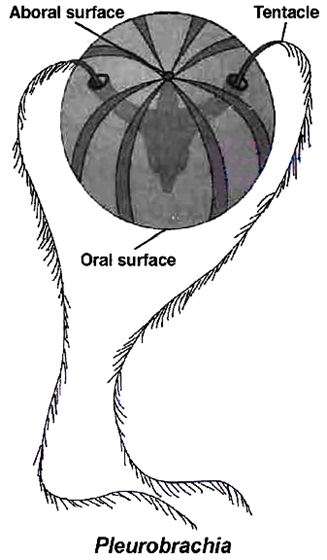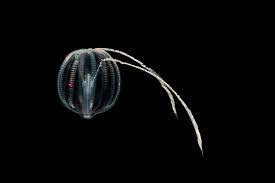- Books Name
- ACME SMART COACHING Biology Book
- Publication
- ACME SMART PUBLICATION
- Course
- CBSE Class 11
- Subject
- Biology
PHYLUM: CTENOPHORA / SEA WALNUT / COMB JELLIES
Ctenophores are exclusively marine, solitary, free swimming or pelagic, very active animals with transparent and flat or oval body shape and have following important characters :

1. Body soft, delicate, transparent and gelatinous without segmentation.
2. Polyp phase is absent in their life cycle, shape is typically spherical, pear shaped or cylindrical, flat in some.
3. They are radially symmetrical, diploblastic, tissue level of organisation and devoid of cnidoblast cells.
4. Tentacles may be present or absent. When present, the number of tentacles is 2. They are solid and possess adhesive cells called colloblasts (lasso cells). Digestion is both extracellular and intracellular. Bioluminescence (the property of a living organism to emit light) is well-marked in ctenophores.
5. The animals move by cilia, which join together to form comb plates. There are eight median combplates forming locomotor organs, hence organisms are called comb-jellies or sea-walnuts.
6. Gastrovascular cavity is branched and opens to the exterior by stomodaeum.
7. They are diploblastic animals but the mesoglea is different from that of cnidaria; it contains amoebocytes and smooth muscle cells and is comparable to a loose layer of cells. From this viewpoint, ctenophores may be considered as triploblastic.
8. Skeletal, circulatory, respiratory and excretory systems are absent. Nervous system is diffuse type.
9. The presence of a special sense organ 'Statocyst' at the opposite end of the mouth (aboral end) is the characteristic of the members of this phylum.
10. All are hermaphrodite. Testes and ovary formed side by side from endoderm of digestive canals.
11. Asexual reproduction doesn't occur. They reproduce only by sexual means. Fertilization is external. Development is indirect and an immature ciliated stage called 'cydippid larva' is found in some forms.
Examples: Hormiphora (The sea walnut), Pleurobrachia (The sea gooseberry), Ctenoplana, Cestum (The venus girdle)
Concept Builder
Word roots and Origins :
(a) Colloblasts from the Greek kolla meaning "glue" and blastos meaning "bud".
(b) Ctenophore from the Greek ktene meaning "comb" and phors meaning "bearing".
Phylum Ctenophora
Ctenophores, often known as sea walnuts or comb jellies, are biradially symmetrical, diploblastic animals with a tissue-level organization that are entirely marine. The body has eight rows of ciliated comb plates on the outside that aid in movement. The existence of comb plates containing cilia, which are employed for propulsion, distinguishes the phylum. Ctenophores have a more complex body than sponges, although it is less complicated than bilaterians. They have tissue-level organization, just like cnidarians. Extracellular and intracellular digestion both are observed. Ctenophores exhibit a lot of bioluminescence (the ability of a living creature to emit light). They do not have stinging cells. In order to capture prey, ctenophores possess sticky cells called Colloblasts. The sexes are not divided. Sexual reproduction is the only way to reproduce.

External fertilization is used in conjunction with indirect development.Examples arePleurobrachia and Ctenoplana.

 ACME SMART PUBLICATION
ACME SMART PUBLICATION
